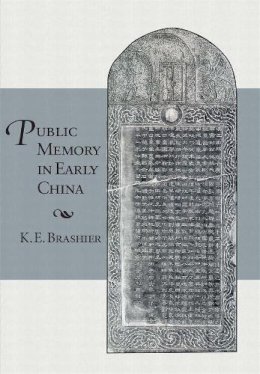8%OFF

Stock image for illustration purposes only - book cover, edition or condition may vary.
Public Memory in Early China (Harvard-Yenching Institute Monograph Series)
K. E. Brashier
€ 70.04
€ 64.10
FREE Delivery in Ireland
Description for Public Memory in Early China (Harvard-Yenching Institute Monograph Series)
Hardcover. K. E. Brashier examines practices of memorializing the dead in early imperial China. After surveying how learning in this period relied on memorization and recitation, he treats the parameters name, age, and kinship as ways of identifying a person in Han public memory, as well as the media responsible for preserving the deceased person's identity. Series: Harvard-Yenching Institute Monograph Series. Num Pages: 550 pages, Illustrations (black and white). BIC Classification: HBJF; JHBT; JHBZ. Category: (G) General (US: Trade). Dimension: 162 x 237 x 39. Weight in Grams: 926.
In early imperial China, the dead were remembered by stereotyping them, by relating them to the existing public memory and not by vaunting what made each person individually distinct and extraordinary in his or her lifetime. Their posthumous names were chosen from a limited predetermined pool; their descriptors were derived from set phrases in the classical tradition; and their identities were explicitly categorized as being like this cultural hero or that sage official in antiquity. In other words, postmortem remembrance was a process of pouring new ancestors into prefabricated molds or stamping them with rigid cookie cutters. Public Memory in ... Read more is an examination of this pouring and stamping process. After surveying ways in which learning in the early imperial period relied upon memorization and recitation, K. E. Brashier treats three definitive parameters of identity—name, age, and kinship—as ways of negotiating a person’s relative position within the collective consciousness. He then examines both the tangible and intangible media responsible for keeping that defined identity welded into the infrastructure of Han public memory. Show Less
In early imperial China, the dead were remembered by stereotyping them, by relating them to the existing public memory and not by vaunting what made each person individually distinct and extraordinary in his or her lifetime. Their posthumous names were chosen from a limited predetermined pool; their descriptors were derived from set phrases in the classical tradition; and their identities were explicitly categorized as being like this cultural hero or that sage official in antiquity. In other words, postmortem remembrance was a process of pouring new ancestors into prefabricated molds or stamping them with rigid cookie cutters. Public Memory in ... Read more is an examination of this pouring and stamping process. After surveying ways in which learning in the early imperial period relied upon memorization and recitation, K. E. Brashier treats three definitive parameters of identity—name, age, and kinship—as ways of negotiating a person’s relative position within the collective consciousness. He then examines both the tangible and intangible media responsible for keeping that defined identity welded into the infrastructure of Han public memory. Show Less
Product Details
Publisher
Harvard University Asia Center
Format
Hardback
Publication date
2014
Series
Harvard-Yenching Institute Monograph Series
Condition
New
Weight
925g
Number of Pages
526
Place of Publication
, United States
ISBN
9780674492035
SKU
V9780674492035
Shipping Time
Usually ships in 7 to 11 working days
Ref
99-1
About K. E. Brashier
K. E. Brashier is Professor of Religion at Reed College.
Reviews for Public Memory in Early China (Harvard-Yenching Institute Monograph Series)
